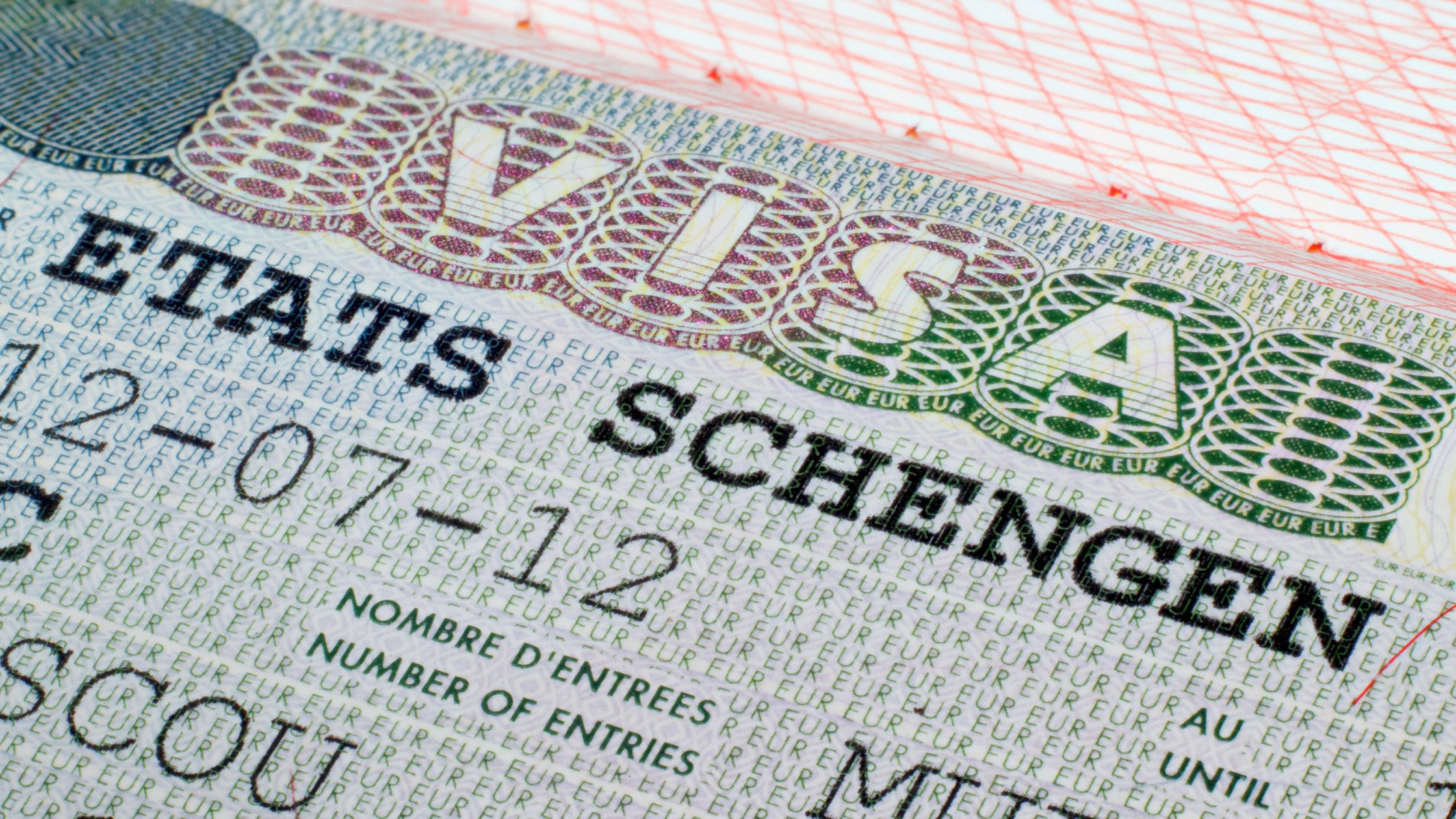Spain Non-Lucrative Visa | Apply from India – Step-by-Step Guide
How to Apply for Spain Non-Lucrative Visa: A Step-by-Step Guide for Indian Applicants
Introduction
Are you dreaming of living in Spain without working — soaking up Mediterranean sunshine, Spanish food, and a relaxed lifestyle? The Spain Non-Lucrative Visa makes it possible. For Indian citizens and other non-EU nationals, it allows you to live legally in Spain as long as you can support yourself financially without taking up employment there.
This detailed guide covers everything you need — eligibility, income proof, documents, application process, renewals, and even tax and residency tips — all written in easy language.
1. What is the Spain Non-Lucrative Visa?
The Spain Non-Lucrative Visa (Visado de Residencia No Lucrativa) is a residence permit that allows non-EU citizens to live in Spain for more than 90 days without working. It’s perfect for retirees, remote earners, and people with passive income such as rent, dividends, or savings.
You can live in Spain, travel freely in the Schengen Zone, and after five years, even apply for permanent residence. After ten years of continuous stay, you may be eligible for Spanish citizenship.
The only key rule — you cannot work or run a business in Spain under this visa.
2. Why Apply for the Spain Non-Lucrative Visa?
-
Live in Spain legally — enjoy the lifestyle, weather, and culture.
-
No need for a job offer — you qualify based on your financial means.
-
Bring your family — spouse and dependent children can apply with you.
-
Pathway to residency and citizenship — stay long-term in Spain.
-
Travel within Europe — free movement within Schengen countries.
3. Who Can Apply?
You are eligible if you:
-
Are a non-EU/EEA/Swiss citizen (for example, Indian).
-
Have enough income or savings to live without working.
-
Have private health insurance valid in Spain.
-
Have no criminal record and good medical health.
-
Apply from your home country (not inside Spain).
4. Financial Requirements for 2025
The Spanish government uses a benchmark called IPREM (Indicador Público de Renta de Efectos Múltiples) to decide how much money you must show.
For 2025:
-
Main applicant: 400% of IPREM = around €2,400 per month or €28,800 per year.
-
Each dependent: +100% of IPREM = about €600 per month or €7,200 per year.
Example:
If you apply with your spouse and one child → €28,800 + €7,200 + €7,200 = €43,200 per year.
You can prove this by showing:
-
Bank savings or fixed deposits.
-
Pension statements.
-
Rental or investment income.
-
Dividend or interest income.
Tip: Show more than the minimum — it increases your approval chances.
5. Required Documents (From India)
Here’s the typical checklist for Indian applicants:
-
Visa application form (national visa) + residence authorisation form (EX-01).
-
Two recent passport photos.
-
Valid passport (1 year validity minimum, issued in last 10 years).
-
Copies of all passport pages.
-
Cover letter explaining purpose of stay.
-
Proof of sufficient funds (bank statements, savings, pension, income).
-
Private health insurance valid in Spain.
-
Police clearance certificate (India + any country lived in last 5 years).
-
Medical certificate (no contagious diseases).
-
Proof of accommodation in Spain (rental contract or letter).
-
Visa fee receipt.
-
Marriage certificate and birth certificates (if applying with family).
Important:
-
All documents not in Spanish must be translated and apostilled.
-
Keep clear photocopies and organise everything in order.
6. Step-by-Step Application Process (From India)
Step 1: Prepare documents
Gather everything listed above, ensuring funds, translations, and health insurance are ready.
Step 2: Choose your consulate
Apply at the Spanish Embassy or authorised BLS Visa Centre in India.
Step 3: Book appointment
Schedule your submission online or through the centre.
Step 4: Submit application & biometrics
Visit the visa centre, submit documents, give fingerprints, and attend an interview if required.
Step 5: Wait for decision
Processing time is usually 4–8 weeks.
Step 6: Get visa & travel to Spain
Once approved, you’ll receive a 90-day visa sticker to enter Spain.
Step 7: Apply for TIE (Foreigner ID Card)
After arrival, apply for your residence card (TIE) at the local immigration office within 30 days.
Check Official Website: Spain Immigration
7. Duration and Renewals
-
Initial visa: 1 year.
-
First renewal: 2 years.
-
Second renewal: 2 years.
-
After 5 years → Permanent Residency.
-
After 10 years → Spanish Citizenship.
Tip: You must live in Spain at least 183 days per year to maintain your visa and count your residency years.
8. Living in Spain – Things to Know
Accommodation: You must show proof of housing. You can rent or buy. Cheaper regions include Valencia, Alicante, and Granada.
Health Insurance: Must be private, full coverage, with no co-payment. Many applicants choose Spanish insurers like Sanitas, Adeslas, or Mapfre.
Banking: You may open a Spanish bank account after arrival. Keep consistent funds in your account for renewals.
Taxes: If you live in Spain over 183 days per year, you become a tax resident and must declare worldwide income. Spain and India have a Double Tax Avoidance Agreement (DTAA) to prevent double taxation.
Language: Learn basic Spanish — it helps with documents, renting, and integration.
9. Renewal Process Explained
Start 60 days before your visa expires. You’ll need:
-
Updated bank statements showing continued funds.
-
Valid health insurance.
-
Proof of address (rental contract, utility bills).
-
Proof of living in Spain (empadronamiento certificate).
-
Renewal form EX-01 and payment of renewal fees.
Avoid spending too much time outside Spain; otherwise, renewal can be refused.
10. Common Mistakes to Avoid
-
Showing less funds than required.
-
Submitting travel insurance instead of full private health insurance.
-
Forgetting apostilles and Spanish translations.
-
Applying too late.
-
Staying outside Spain for long periods.
-
Working illegally in Spain.
-
Ignoring tax residency rules.
11. FAQs
Q1: Can I apply while in Spain?
No. You must apply from India or your country of residence.
Q2: Can I work remotely for an Indian company?
Officially, the visa doesn’t allow work in Spain, even remote work. It’s a grey area — consult a lawyer if needed.
Q3: Can I bring my family?
Yes, but you must show extra funds (€7,200 per dependent).
Q4: Can I buy property in Spain?
Yes, but property ownership alone doesn’t grant this visa.
Q5: How long does it take to get?
Usually between 1 and 3 months.
Q6: How long before I can get citizenship?
After 10 years of legal residence.
Q7: What if I lose my income source?
You must still meet financial requirements at renewal or risk losing residency.
12. Example Case (For Clarity)
Mr. R, a 55-year-old Indian retiree, earns €3,000/month pension and has €40,000 savings. He applies with his wife.
-
Total requirement: €28,800 + €7,200 = €36,000/year.
-
He provides 12 months of pension statements, bank savings proof, insurance, and accommodation.
-
Applies at Spanish Embassy in New Delhi.
-
Visa approved in 6 weeks.
-
After moving, he applies for his TIE card and spends over 183 days each year in Spain.
-
After 5 years → applies for permanent residency.
13. 2025 Updates
-
Main applicant income: around €2,400/month.
-
Dependent requirement: €600/month per person.
-
Must show continuous, legal income source.
-
Golden Visa (property route) tightened, so Non-Lucrative Visa is more popular.
-
More emphasis on Spanish health insurance and tax compliance.
14. Pros and Cons Summary
Pros:
-
Legal long-term stay in Spain.
-
No job offer needed.
-
Family eligible.
-
Path to residency and citizenship.
-
Access to Schengen travel.
Cons:
-
Cannot work in Spain.
-
High financial requirement.
-
Must live in Spain most of the year.
-
Tax implications if resident.
-
Bureaucratic paperwork and translations required.
15. Quick Checklist
-
Confirm eligibility (non-EU, sufficient funds).
-
Prepare required documents.
-
Get Spanish translations and apostilles.
-
Obtain private health insurance.
-
Apply at Spanish Consulate or BLS Centre in India.
-
Wait for decision (1–3 months).
-
Travel to Spain and get TIE card.
-
Maintain residence and renew on time.
-
Track tax and stay-days for compliance.
Conclusion
The Spain Non-Lucrative Visa is one of the most straightforward ways for Indians to live long-term in Spain without a job. If you have sufficient savings or steady passive income, it opens doors to the Spanish lifestyle — beaches, mountains, culture, and travel freedom.
Plan carefully, meet financial requirements, and prepare proper documentation. With consistency and patience, this visa can lead to permanent residency and eventually Spanish citizenship.




